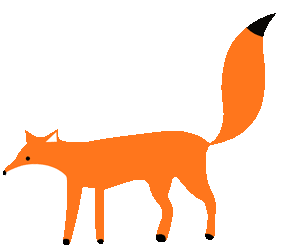
Extra Credit Options
Winter Ideas
As more opportunities arise, information will be added. The events where you are asked to click the picture above, simply "click it" to obtain directions on how to complete the assignment. Other activities are noted below on what your (or your child) must do to receive credit for the activity. You may choose to do any activity for 2% extra credit toward your final trimester grade up to a maximum of 4% points (meaning you cannot get credit for more than 5 in a trimester). When you turn your extra credit in, mark it EXTRA CREDIT at the top of the paper.

Speed: Science in Motion
On Exhibit January 23 – May 1, 2016
Where: Midland Center for the Arts
Cost: Adults $9 Kids ages 4-14 $6
Unravel the cutting-edge science & technology behind motor sports!
DISCOVER how the science of engines, aerodynamics and motion has lifted auto racing into the highest echelon of modern technology.
EXPLORE the technology of auto racing – from physics and engineering to human endurance and biology – through hands-on activities
TEST your skills in a race simulator – and determine if you have what it takes to become a professional driver!
Bring your camera: Photography is permitted!
To get credit for this extra credit you can write a 2 paragraph summary about what you did and what you learned, create a photo collage with a caption at the bottom, create a short movie documenting what you learned and did, or create a poster inviting classmates to the event!
Inside the Chippewa Nature Center Visitor Center
Directions: Upon entering the visitor center, you will see the Ecosystem Gallery. This is where you will be going. Make sure that you bring a pencil, the questions below, and paper to take some notes. You will need to look through each ecosystem to find the answers to the questions. When you finish, you will create a collage with photos and words OR a diorama of your favorite ecosystem. Hand in your diorama or your collage with the answers to the questions below.
River Ecosystem.
1. At the What's That Sound station, which bird sound did you most like and why?
2. Why do raccoons wet their hands prior to eating? What food listed that raccoons eat most surprised you?
3. Do baby lampreys feed on fish? What are lampreys classified as (parasites, herbivores, scavengers)?
4. Why do minks have partially webbed feet?
Wetland Ecosystem
1. What are 2 examples of wetland animals that nest in Cattails?
2. What is the advantage of Cattails to that of Phragmites?
3. What is CNC doing to reduce the population of purple Loosestrife? What type of wetland is purple Loosestrife found growing?
4. Name 3 things leeches like to eat? How would they be classified? (Detrivore, Omnivore, Parasite,Herbivore,etc)?
5. Why was the Boggy Wetland drained in the 1970s?
6. What are some examples of animals found at the CNC marsh?
Field Ecosystem
1. What type of birds can be found nesting in CNC grassy fields before leaving for Argentina?
2. What does the most abundant butterfly at the CNC eat?
3. Name at least 5 plants and/or animals in a meadow ecosystem at CNC.
4. Monarch caterpillars feed on the milkweed plant which provides a benefit. What type of relationship exists between the monarch and the milkweed?
5. Why is temperature critical to view a big brown bat fluttering about after sunset?
6. One bird you might find at the CNC munching on sunflower seeds is the cardinal. How is the cardinal's feeding habbits different than an Eastern Bluebird at the CNC?
7. In order for a plant to survive, it must spread it's seeds. What are some ways in which seeds in a field might spread? Please explain 3 different ways.
Woodland Ecosystem
1. What is a sign that an ash tree might have an Emerald Ash Borer? What country did this species originate from? What is a possible way in which this insect might have migrated to the U.S.?
2. The maple tree and the Mycorrhizae fungi have a symbiotic relationship; why? What might be another example of a symbiotic relationship between plant and animal at the CNC?
3. Describe what types of insects might live inside a tree and why.
4. Go to the very back of the CNC to the wildlife viewing area and identify the animals that you see using the chart to the left as you walk back to the viewing area. Record all animals here!
***Explain what ecosystem you believe that the burrowing owl from Hoot would most likely fit into based on what you have learned here at the CNC. Support your claim with evidence




